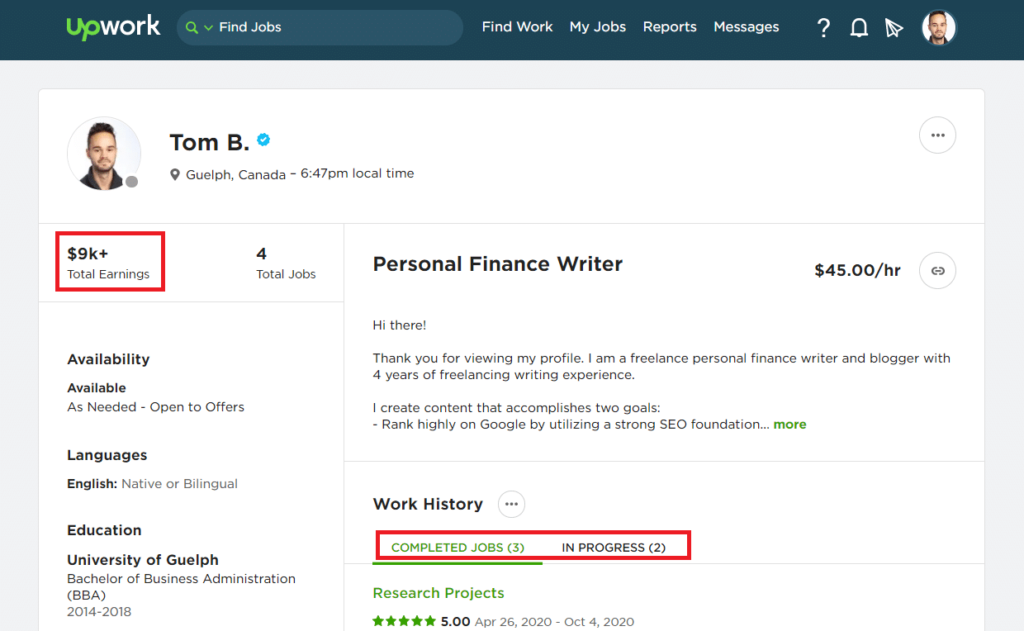Table of Content
Table of Contents
In today’s rapidly evolving digital landscape, freelancing continues to reshape how we work. Whether you’re a seasoned professional looking to diversify your client base or a newcomer eager to break into the gig economy, finding the best freelance websites can make all the difference in your success.
But with dozens of freelance marketplaces competing for your attention, how do you know which platforms deserve your time and energy? Which ones align with your specific skills, experience level, and career goals?
This comprehensive guide cuts through the noise to bring you an in-depth analysis of the top freelance platforms in 2025. We’ll go beyond the typical surface-level comparisons to provide you with actionable insights that will help you choose the right platform and maximize your earning potential.
Understanding Freelance Platforms: Types and Differences
Before diving into specific platforms, it’s important to understand the different types of freelance websites available:
- Freelance Marketplaces: These comprehensive platforms connect freelancers with clients and handle everything from project listings to payments (e.g., Fiverr, Upwork).
- Job Boards: These sites list freelance opportunities but typically don’t facilitate the entire work process (e.g., ProBlogger, FlexJobs).
- Niche Platforms: These specialized sites focus on specific industries or skills (e.g., 99designs for designers, Contently for writers).
Each type offers distinct advantages depending on your goals, work style, and experience level. Now, let’s explore the standout platforms that deserve your attention in 2025.
Featured Platform #1: Fiverr – The Gig Economy Powerhouse

What Is Fiverr?
Fiverr has transformed from its humble “$5 gig” origins into a sophisticated marketplace where freelancers offer services (called “gigs”) across more than 500 categories. The platform’s gig-based model allows you to create specific service packages with clear deliverables, timelines, and pricing tiers.
How Fiverr Works
Unlike traditional job-bidding platforms, Fiverr inverts the typical freelance model: instead of applying to jobs, you create service offerings that clients can purchase directly. This seller-driven approach gives you more control over your services, pricing, and work parameters.
The platform operates on a level-based system where sellers progress from New Seller to Top Rated Seller based on performance metrics including:
- Order completion rate
- Response time
- Delivery time
- Customer satisfaction
- Revenue generation
Pros of Using Fiverr
- Accessibility: Low barrier to entry makes it ideal for beginners
- Package-Based Pricing: Create tiered offerings (Basic, Standard, Premium) to upsell clients
- Passive Lead Generation: Your gigs work as 24/7 marketing assets
- Global Clientele: Access to worldwide customers across industries
- Secure Payments: All transactions handled through the platform
- Seller Protection: Clear deliverables help prevent scope creep
Cons of Using Fiverr
- Intense Competition: Standing out among millions of gigs can be challenging
- Platform Dependency: Building a reputation outside Fiverr is difficult
- Commission Structure: 20% fee on all earnings
- Initial Low Rates: New sellers often need to start with competitive pricing
- Algorithm Changes: Visibility can fluctuate with platform updates
Fee Structure Breakdown
| Transaction Type | Fiverr’s Commission | Seller Receives |
|---|---|---|
| Standard Gigs | 20% of total | 80% of total |
| Fiverr Pro Gigs | 20% of total | 80% of total |
| Fiverr Business | 20% of total | 80% of total |
| Withdrawals | $3 for PayPal; $1 for direct deposit | Varies by withdrawal method |
Who Succeeds on Fiverr?
Fiverr works best for:
- Beginners looking to build their portfolio and client base
- Service-based professionals offering clearly defined deliverables
- Digital skill providers in design, writing, programming, marketing, etc.
- Side hustlers seeking flexible, project-based work
- Specialists with unique or niche skills
Pro Tips for Fiverr Success
- Keyword-Optimize Your Gigs: Research what potential clients are searching for and incorporate these terms naturally in your gig titles and descriptions.
- Create Standout Gig Images: Use professional, eye-catching thumbnails that clearly communicate your service.
- Develop Strategic Pricing Tiers: Offer substantial value increases between your Basic, Standard, and Premium packages to encourage upsells.
- Leverage Gig Extras: Add profitable add-on services to increase your average order value.
- Focus on Early Reviews: Consider offering competitive rates initially to gather positive feedback, then gradually increase prices.
- Master Response Time: Quick, professional responses dramatically improve conversion rates and seller ranking.
- Deliver Consistently Excellent Work: Overdeliver when possible to earn repeat business and referrals.
Sign up for Fiverr and create your first gig today →
Featured Platform #2: Upwork – The Versatile Marketplace

What Is Upwork?
Upwork is the result of a merger between two pioneer freelance platforms (oDesk and Elance) and stands as one of the largest and most diverse freelance marketplaces globally. The platform facilitates over $2.5 billion in annual freelance work across virtually every professional category imaginable.
How Upwork Works
Upwork primarily operates on a proposal-based system where freelancers bid on posted jobs, though it has also incorporated a “Project Catalog” feature similar to Fiverr’s gig system. The platform offers three main ways to work:
- Hourly Contracts: Track time through Upwork’s tracker with guaranteed payment
- Fixed-Price Contracts: Payment released upon milestone completion
- Project Catalog: Pre-packaged services clients can purchase directly
The platform uses the Job Success Score (JSS) – a percentage that reflects client satisfaction with your work – as its primary reputation metric.
Pros of Using Upwork
- Project Diversity: Access to short-term gigs, long-term contracts, and everything in between
- Higher-Value Projects: More opportunities for premium rates than many other platforms
- Enterprise Clients: Access to Fortune 500 companies and established businesses
- Payment Protection: Secure payment system with hourly protection
- Career Development: Potential to convert one-time clients into long-term relationships
- Agency Potential: Options to build teams and scale beyond solo work
Cons of Using Upwork
- Competitive Bidding: Can be time-consuming and require many proposals
- Connects System: Limited free applications; additional “Connects” cost money
- Learning Curve: More complex than some competitor platforms
- Sliding Fee Scale: Higher fees for new client relationships
- Profile Approval: More stringent verification process than some platforms
Fee Structure Breakdown
| Lifetime Billing with Client | Upwork’s Commission | Freelancer Receives |
|---|---|---|
| First $500 | 20% | 80% |
| $500.01 – $10,000 | 10% | 90% |
| $10,000+ | 5% | 95% |
Additional costs include Connects (typically $0.15-$0.90 per proposal) and premium membership options.
Who Succeeds on Upwork?
Upwork works best for:
- Experienced professionals with established portfolios
- Specialists commanding premium rates in their field
- Freelancers seeking long-term relationships with clients
- Those comfortable with detailed proposals and client negotiation
- Full-time freelancers looking to build a sustainable business
Pro Tips for Upwork Success
- Craft a Specialized Profile: Focus on a specific niche rather than presenting yourself as a generalist.
- Write Personalized Proposals: Address the client’s specific needs and demonstrate understanding of their project.
- Perfect Your Portfolio: Showcase your best, most relevant work samples.
- Start with Strategic Pricing: Consider competitive rates to win initial jobs, then increase as your reputation grows.
- Focus on the JSS: Maintain a high Job Success Score by consistently exceeding client expectations.
- Be Selective with Proposals: Only apply for jobs where you’re a strong fit to conserve Connects.
- Upsell Current Clients: It’s more profitable to expand existing relationships than to constantly find new ones due to the sliding fee structure.
Create your Upwork profile and start bidding on projects →
Other Top General Freelance Websites
While Fiverr and Upwork dominate the freelance marketplace landscape, several other platforms offer unique advantages and opportunities:
Freelancer.com
What It Is: One of the oldest freelance marketplaces with over 50 million registered users and projects ranging from simple tasks to complex development work.
Pros:
- Wide variety of project categories
- Contest feature for creative work
- Mobile app for on-the-go management
- Milestone payment system
Cons:
- High competition due to global talent pool
- Multiple fee types (membership, project, withdrawal)
- Interface can be overwhelming for beginners
Best For: Freelancers comfortable with competitive bidding and those interested in design contests.
Guru.com
What It Is: A well-established platform with strong safeguards and a professional focus, hosting over 3 million freelancers.
Pros:
- SafePay protection system
- Lower fees than many competitors (as low as 5%)
- Work Room collaboration tools
- Flexible payment terms
Cons:
- Fewer job postings than larger platforms
- Limited free bids (quotes)
- North American-centric client base
Best For: Professionals seeking quality over quantity, particularly in technical fields like programming, engineering, and architecture.
PeoplePerHour
What It Is: A UK-based platform that blends elements of both Upwork’s proposal system and Fiverr’s gig-based approach with their “Hourlies” feature.
Pros:
- Strong presence in European markets
- Streamlined certification process
- Integrated workstream and communication tools
- Escrow payment protection
Cons:
- Service fee structure (£0.60 + 20% up to £500, sliding scale after)
- More regionally focused than global platforms
- Approval process can be lengthy
Best For: European freelancers, particularly those in creative and digital marketing fields.
Best Freelance Websites for Beginners
If you’re just starting your freelance journey, certain platforms offer more accessible entry points:
Fiverr for Beginners
Fiverr remains one of the most beginner-friendly platforms due to:
- No approval process to start selling
- No proposal writing or competitive bidding
- Ability to create simple, low-priced packages to build experience
- Level progression system that rewards consistent performance
Upwork for Beginners
While more challenging than Fiverr, Upwork can be fruitful for beginners who:
- Create a highly focused profile in an area with demand
- Start with smaller jobs to build feedback
- Write thoughtful, personalized proposals
- Leverage transferable skills from previous employment
Additional Beginner-Friendly Platforms
Contra
- No platform fees (100% of earnings go to freelancers)
- Simple interface designed for digital professionals
- Growing community with emphasis on fair work practices
TaskRabbit
- Ideal for local, skill-based services
- Straightforward task-based structure
- Good for building service experience
Solid Gigs
- Curated job listings sent directly to your inbox
- Reduces the time spent searching for opportunities
- Quality over quantity approach
Niche Freelance Platforms by Category
For Creatives and Designers
99designs
What It Is: A design-focused platform specializing in contests and direct client work.
Pros:
- Access to brand name clients
- Portfolio building opportunities
- Design community and feedback
- Certification program
Cons:
- Contest model can be hit-or-miss
- Higher commissions (15-50% depending on project)
Best For: Graphic designers, illustrators, and visual artists looking to build impressive portfolios.
Dribbble Hiring
What It Is: The job board extension of the popular design community Dribbble.
Pros:
- High-quality clients seeking professional design
- Direct connection to hiring companies
- Portfolio showcase integrated with job search
- Premium positioning for designers
Cons:
- High competition for premium positions
- Pro membership required for full access ($8-16/month)
Best For: Established designers with strong portfolios seeking quality clients rather than volume.
For Writers and Content Creators
ProBlogger Job Board
What It Is: A curated job board specifically for content writers, bloggers, and editors.
Pros:
- Quality over quantity job listings
- Direct application to clients (no platform fees)
- Industry-specific opportunities
- Legitimate, pre-screened opportunities
Cons:
- No integrated payment or contract protection
- Limited to writing and editing jobs
- Job board only (no profile or portfolio features)
Best For: Content writers seeking ongoing relationships with reputable clients.
Contently
What It Is: A premium content platform connecting top writers with major brands.
Pros:
- Enterprise-level clients (Fortune 500 companies)
- Portfolio-driven matching system
- Premium rates ($0.50-$2/word common)
- Managed relationship process
Cons:
- Highly selective acceptance
- Work availability not guaranteed
- Platform-managed client relationships
Best For: Experienced writers with impressive portfolios and demonstrated expertise in specific industries.
For Developers and Tech Professionals
Arc.dev
What It Is: A vetted marketplace for senior developers seeking remote opportunities.
Pros:
- Premium positions with thorough vetting
- Higher average rates than general platforms
- Career coaching and development
- Both freelance and full-time opportunities
Cons:
- Extensive screening process
- Limited to experienced developers
- Focus on full-time over project-based work
Best For: Senior developers looking for stable, high-paying remote work arrangements.
Gun.io
What It Is: A highly-vetted technical talent platform focusing on quality over quantity.
Pros:
- Technical skill verification process
- Higher average project values
- Both freelance and full-time placements
- Developer-friendly contracts and terms
Cons:
- Rigorous application process
- Limited volume of opportunities
- Primarily focused on programming and development
Best For: Experienced developers seeking quality projects with pre-vetted clients.
For Consultants and Experts
Catalant
What It Is: A platform connecting business experts with companies needing strategic guidance.
Pros:
- High-value consulting opportunities
- Executive and strategy-level projects
- Industry specialization options
- Professional networking potential
Cons:
- Requires significant professional experience
- Selective acceptance process
- Competitive for premier opportunities
Best For: Former executives, management consultants, and domain experts with proven track records.
GLG (Gerson Lehrman Group)
What It Is: A professional learning platform connecting businesses with subject matter experts.
Pros:
- Opportunity to work with top firms
- Project variety (calls, meetings, surveys)
- Compensation for expertise, not deliverables
- Flexible time commitment
Cons:
- Invitation or application required
- Limited to advisory roles
- Irregular work frequency
Best For: Industry experts with specialized knowledge seeking advisory opportunities rather than implementation work.
How to Choose the Right Freelance Website FOR YOU
Selecting the best platform depends on multiple factors unique to your situation. Use this framework to identify the best match for your needs:
Decision Framework: Finding Your Ideal Platform
| Factor | Consider This | Best Platforms If This Is Priority |
|---|---|---|
| Experience Level | Your portfolio depth and work history | Beginners: Fiverr, Contra<br>Intermediate: Upwork, PeoplePerHour<br>Advanced: Toptal, Arc.dev |
| Skill Type | The nature of your service offerings | Creative: 99designs, Dribbble<br>Writing: Contently, ProBlogger<br>Tech: Gun.io, GitHub Jobs<br>Consulting: Catalant, GLG |
| Income Goals | Your financial objectives | Side Income: Fiverr, Freelancer.com<br>Full-time Income: Upwork, Toptal<br>Premium Rates: Arc.dev, Braintrust |
| Work Style | How you prefer to work | Project-Based: Fiverr, PeoplePerHour<br>Ongoing Relationships: Upwork, Guru<br>Consulting: Catalant, Clarity |
| Time Commitment | Available hours per week | Part-time: Fiverr, TaskRabbit<br>Full-time: Upwork, Arc.dev<br>Flexible: Contra, Solid Gigs |
| Client Type | Who you want to work with | Small Business: Fiverr, PeoplePerHour<br>Mid-Market: Upwork, Guru<br>Enterprise: Toptal, Braintrust |
Platform Comparison: At-a-Glance
| Platform | Best For | Fee Structure | Barrier to Entry | Income Potential |
|---|---|---|---|---|
| Fiverr | Beginners, digital services | 20% flat | Low | Medium-High |
| Upwork | Diverse professionals | 5-20% sliding | Medium | Medium-High |
| Freelancer.com | Competitive bidders | 10-20% + membership | Low | Medium |
| Guru | Technical professionals | 5-9% | Medium | Medium |
| PeoplePerHour | European professionals | £0.60 + 20% (sliding) | Medium | Medium |
| Toptal | Elite developers, designers | Undisclosed | Very High | Very High |
| 99designs | Graphic designers | 15-50% | Medium | Medium-High |
| ProBlogger | Content writers | None (job board) | Low | Medium |
| Arc.dev | Senior developers | Undisclosed | High | High |
| Contra | Independent professionals | None (0%) | Low | Medium |
Essential Tips for Success on Any Freelance Platform
Regardless of which platform you choose, certain strategies universally increase your chances of success:
Perfect Your Profile
Your profile serves as your digital first impression. Invest time in:
- A professional, approachable photo
- A compelling headline that specifies your expertise
- A concise but comprehensive bio highlighting your unique value proposition
- Portfolio pieces that demonstrate range and quality
- Skill tags and keywords relevant to your target projects
Master Portfolio Presentation
Showcase your best work strategically:
- Focus on quality over quantity
- Organize by category or skill
- Include context and results for each project
- Update regularly with your latest accomplishments
- Tailor featured items to your ideal client type
Communicate Professionally
Communication skills often determine success more than technical ability:
- Respond promptly to all inquiries (within 24 hours at maximum)
- Ask clarifying questions before committing to projects
- Set clear expectations around deliverables and timelines
- Provide regular progress updates during projects
- Follow up appropriately after completion
Manage Scope and Contracts Effectively
Protect yourself and ensure client satisfaction by:
- Getting project details in writing before starting
- Using the platform’s contract and statement of work features
- Clearly defining what is (and isn’t) included
- Establishing a process for change requests
- Setting milestone-based payment structures for larger projects
Build Your Reputation Strategically
Your review profile is your most valuable platform asset:
- Deliver consistent quality on every project, regardless of size
- Go slightly above expectations when possible
- Ask satisfied clients for detailed reviews
- Address any negative feedback professionally
- Gradually increase rates as your reputation grows
Conclusion: Your Path to Freelance Success
The freelance landscape in 2025 offers more opportunities than ever before, but success requires strategic platform selection and consistent professional practices. The best freelance websites for you will align with your unique combination of skills, experience level, and career goals.
For beginners, platforms like Fiverr provide accessible entry points with structured support systems. For experienced professionals, specialized marketplaces like Upwork, Toptal, or industry-specific sites offer premium opportunities and higher earning potential.
Remember that many successful freelancers maintain profiles across multiple platforms, strategically leveraging each for different types of projects or clients. The most successful approach often involves starting with one platform, mastering its dynamics, then gradually expanding your presence.
Whichever top freelance platforms you choose, focus on delivering exceptional value, building genuine relationships, and continually developing your skills. The freelance economy rewards those who combine technical expertise with business acumen and professional communication.
Ready to launch or level up your freelance career? Choose your platform strategically, perfect your profile, and start connecting with clients who value your unique skills and perspective.
Which freelance platform will you try first? Share your experiences and questions in the comments below!
About the Author: Zineb is a freelancing expert with over 10 years of experience across multiple platforms. Having successfully built a six-figure freelance business, Zineb now helps others navigate the digital marketplace through actionable advice and proven strategies.




